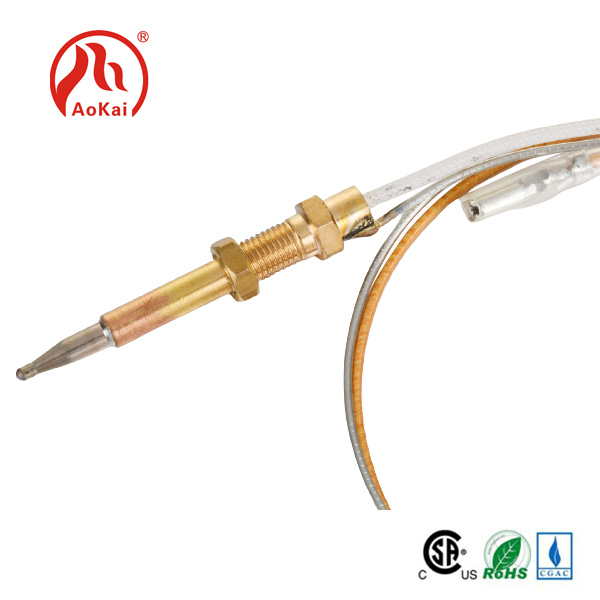The research and development of a large part of the equipment of the best-selling temperature acquisition module on the market is based on the principle of thermocouple technology. Thermocouple is a temperature sensing element and a primary instrument that directly measures temperature and converts the temperature signal into a thermoelectric potential signal, which is then converted into the temperature of the measured medium through an electrical instrument.
The basic principle of thermocouple temperature measurement is that two conductors of different materials form a closed loop. When there is a temperature gradient at both ends, a current will pass through the loop. At this time, there is a thermoelectric potential between the two ends, which is the so-called Seebeck effect.
The two homogeneous conductors of different components are thermocouples. The end with a higher temperature is the working end, and the end with a lower temperature is the free end. The free end is usually at a constant temperature. According to the functional relationship between thermoelectric potential and temperature, a thermocouple graduation table is made; the graduation table is obtained when the temperature of the free end is 0℃. Different thermocouples have different graduation tables.
When a third metal material is connected to the thermocouple loop, as long as the temperature of the two junctions of the material is the same, the thermoelectric potential generated by the thermocouple will remain unchanged, that is, it will not be affected by the third metal connected to the loop. Therefore, when measuring the temperature of the thermocouple, a measuring instrument can be connected. After measuring the thermoelectric potential, the temperature of the measured medium can be known. The thermocouple welds two conductors or semiconductors A and B of different materials to form a closed loop.

When two conductors of different components are connected at both ends to form a loop, when the temperature of the junction is different, an electromotive force will be generated in the loop. This phenomenon is called the thermoelectric effect, and this electromotive force is called the thermoelectric potential. Thermocouples use this principle to measure temperature. Among them, the end directly used to measure the temperature of the medium is called the working end, and the other end is called the cold end; the cold end is connected to the display instrument or the matching instrument, and the display instrument will indicate the thermoelectric potential generated by the thermocouple. Thermocouple is actually an energy converter that converts heat energy into electrical energy and uses the generated thermoelectric potential to measure temperature. For the thermoelectric potential of thermocouple, several issues should be noted.
1. The thermoelectric potential of thermocouple is the difference of the temperature function at both ends of the thermocouple, not the function of the temperature difference at both ends of the thermocouple;
2. The size of the thermoelectric potential generated by the thermocouple has nothing to do with the length and diameter of the thermocouple when the material of the thermocouple is uniform, but only with the composition of the thermocouple material and the temperature difference at both ends;
3. When the material composition of the two thermocouple wires of the thermocouple is determined, the size of the thermoelectric potential of the thermocouple is only related to the temperature difference of the thermocouple; if the temperature of the cold end of the thermocouple is kept constant, the thermoelectric potential of the thermocouple is only a single-valued function of the working end temperature.

